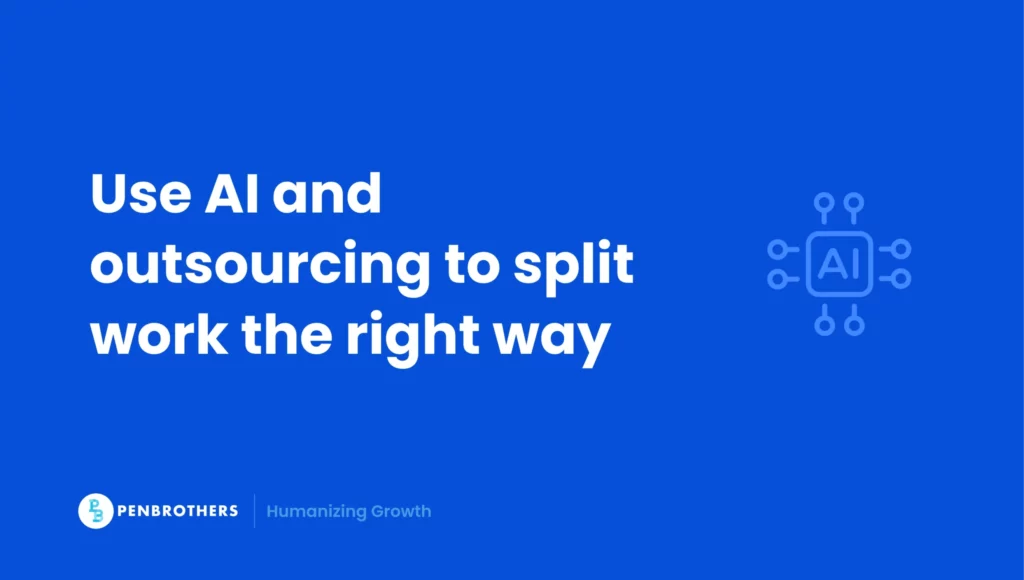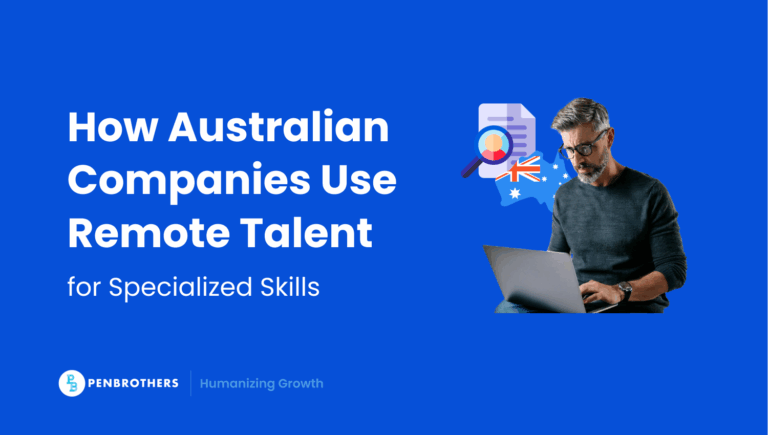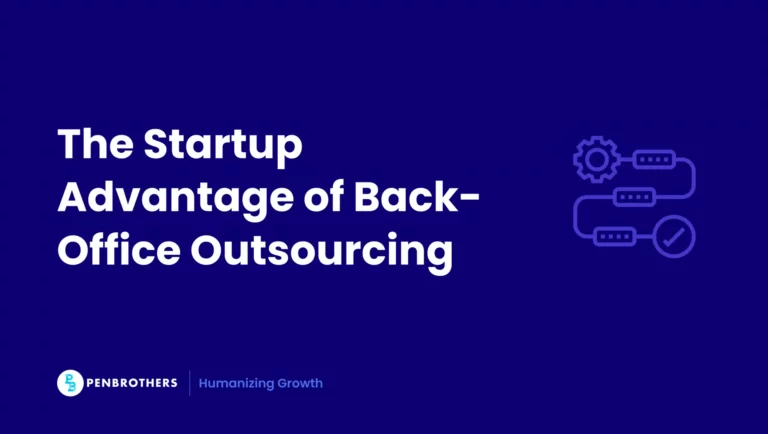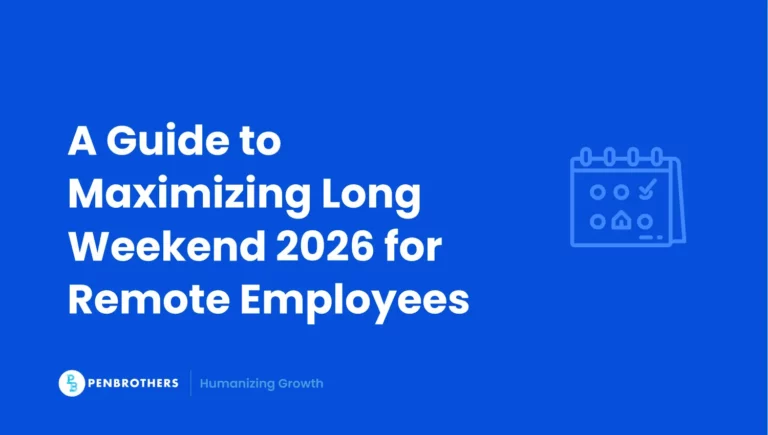The quarterly board meeting is in three days. Marketing targets are 40% higher than last year. Budget is frozen. The hiring committee just rejected your headcount request for the third time.
Sarah, the CMO of a Series B fintech company, stares at her laptop screen at 11 PM on a Tuesday. Revenue goals demand more output, but the math doesn’t work. Two full-time marketers can’t execute the multi-channel strategy investors expect to see. The agency she’s been evaluating wants $15K monthly for basic services. Her internal team is drowning in tactical work with no bandwidth for strategy.
This scenario plays out in boardrooms across America every quarter. Recent CMO budget research shows teams investing in generative AI for time and cost efficiency while trimming some agency spend, which forces a smarter split between in-house ownership, outsourced specialists, and automation. The leaders who crack this code are orchestrating both to cut cycle time and multiply output.
Key Takeaways
- The Hybrid Team is the Winning Model: The most effective marketing structure in 2025 is a hybrid model. This approach combines a lean in-house team for core strategy and brand ownership with a specialized outsourced team for the execution of functions like SEO, paid media, and content production.
- Outsource Execution, Not Strategy: A core principle of the hybrid model is the clear division of labor. The in-house team should always own the high-level strategic direction, brand voice, and final accountability. The outsourced partner is best utilized for the specialized, process-driven execution of campaigns and channel management.
- Measure Business Impact, Not Just Vanity Metrics: Successful outsourcing partnerships are built on Service Level Agreements (SLAs) and Key Performance Indicators (KPIs) that track real business impact. This means focusing on metrics like pipeline contribution, customer acquisition cost (CAC), and return on investment (ROI), rather than just surface-level metrics like clicks and impressions.
- The Philippines Offers a Key Strategic Advantage: The Philippines is a top destination for building an outsourced marketing team due to its unique combination of significant cost savings (76-80%), a deep pool of skilled and creative talent, and strong English proficiency and cultural alignment with Western markets, which greatly accelerates team integration.
What Online Marketing Outsourcing Means Now
The language around marketing partnerships has evolved beyond the old “hire an agency” playbook. Understanding the distinctions matters because each model serves different strategic needs.
Online marketing outsourcing is the formal delegation of digital marketing strategy, execution, or both to an external partner, covering functions like SEO, PPC, content, and social. You’re buying access to specialized skills, operational flexibility, and cost control without the overhead of building internal teams.
Managed marketing services (MMS) takes this deeper. Here, a vendor assumes end-to-end responsibility for a defined scope—say, your entire lead generation engine—operating as an extension of your team and staying accountable for outcomes on a retainer basis. Think of it as outsourced ownership rather than outsourced tasks.
White-label marketing lets one company deliver services that another resells under its brand. This model works when you need fast capability expansion without internal hiring. A web design shop might use white-label SEO to offer search services without building that expertise in-house.
Fractional or outsourced CMO provides contract access to senior marketing leadership (strategy, budget oversight, team management) without a full-time executive salary. For companies that need strategic direction but can’t justify C-suite overhead, this fills a critical gap.
The model distinctions break down like this:
Outsourcing assigns outcomes to a partner with defined scope, SLAs, and KPIs. You’re buying results.
Staff augmentation supplies capacity under your day-to-day direction. You’re renting talent.
Agency of record centralizes multi-channel ownership with one lead firm on retainer. You’re buying strategic partnership.
Freelancers and contractors tackle discrete tasks with higher coordination overhead. You’re buying specific skills.
Why the Hybrid Team Is Winning
The data tells a clear story about where marketing organizations are headed.
Market momentum backs this shift. Sales and marketing outsourcing is projected for steady expansion through 2030 and beyond, signaling executive confidence that external partnerships deliver measurable value.
Adoption patterns confirm the hybrid approach works. Nearly half of B2B firms report using a mix of in-house and outsourced resources, with 94% of those outsourcing calling it effective. Companies aren’t choosing sides; they’re choosing what works for each function.
AI pressure meets flat budgets. CMOs cite time and cost efficiency from GenAI while reshaping partner scopes rather than eliminating them. The technology amplifies human capability rather than replacing it entirely.
Talent constraints in the U.S. continue pushing leaders toward external solutions. Skills gaps in digital marketing, analytics, and ROI measurement persist, making it difficult and expensive to build comprehensive internal teams. The workforce outlook shows this challenge intensifying, with demand for marketing managers growing faster than average while many employers struggle to find qualified candidates.
The Hybrid Operating Model: Who Does What
The most successful partnerships happen when you match tasks to natural strengths rather than trying to force everything in-house or everything external.
Where partners typically excel:
SEO and content: Research depth, programmatic briefs, editorial calendars, production at scale. External teams bring specialized tools and dedicated focus that internal teams rarely match.
PR and digital PR: Media research, newsjacking, and asset-based link outreach. These require relationships and constant attention that busy internal teams can’t maintain.
Paid media: Cross-platform operations for Google and Meta Ads, testing velocity, and budget pacing. The complexity and constant optimization demands make this ideal for specialist teams.
Analytics and CRO: Instrumentation, experimentation, and attribution setup. Technical depth requirements often exceed what generalist internal teams can handle.
Marketing operations and lifecycle/email: Automation, scoring, and CRM alignment. These technical functions benefit from dedicated expertise and tool mastery.
Web and creative: Rapid landing pages, modular templates, and brand-safe assets. External teams can deliver faster turnaround with specialized design and development resources.
Engagement models should match the work type. Use projects for audits and build-outs, retainers for always-on programs, outcome-based pricing when success metrics are tightly defined, embedded pods for high-tempo sprints alongside your team, and fractional leadership for part-time senior guidance.
RACI (Responsible, Accountable, Consulted, Informed), simplified:
Strategy: In-house leads with partner contributions on plans and channel strategy.
Execution: Partners lead most channel work while in-house owns cross-functional dependencies.
Quality assurance: Dedicated reviewer not involved in the build process.
Reporting: Partners report channel KPIs while in-house rolls up to pipeline and revenue.
Handoffs That Prevent Rework
The difference between smooth collaboration and constant friction lives in the operational details most people skip.
Discovery and playbooks establish the foundation. Start with a shared strategy document, current brand and voice guide, and content QA checklist to set standards across teams. Without this foundation, you’ll spend more time correcting work than creating it.
Tool stack and data flow prevents the integration headaches that kill productivity. Establish one source of truth for analytics, define who owns tagging and dashboards, and set access permissions by least privilege. For privacy alignment, map controller versus processor obligations and sign a Data Processing Agreement. Know your CCPA obligations if you handle California customer data.
Cadence keeps everyone aligned without over-managing. Run weekly KPI reviews, monthly retrospectives, and quarterly re-planning sessions to adjust scope and tests against business outcomes. The 2025 B2B research confirms that successful hybrid teams maintain consistent communication rhythms.
SLAs and KPIs That Matter
Most outsourcing relationships fail because they measure activity instead of impact. Fix the metrics, fix the partnership.
What to include in the SLA: Spell out scope, quality standards, response times, issue protocols, acceptance criteria, and business outcomes, not vanity metrics. Consider an SLA dashboard to keep both sides aligned on what matters. Visual tracking helps prevent the metric drift that destroys accountability.
A KPI menu you can defend:
SEO: Technical health, total website visits by unique users, brand and non-brand clicks, impressions, visibility, keyword rankings, and MQLs generated.
Content: Publish velocity, engagements, inquiries, influenced opportunities.
Paid media: Customer acquisition cost by channel, marginal return on ad spend, experiment success rate.
Lifecycle and email: Journey coverage, activation and reactivation rates, revenue per send.
Analytics and CRO: Test cycle time, statistical win rate, and incremental lift measurement.
Roll these channel metrics up to pipeline contribution, customer acquisition cost, and ROI at the leadership level. That’s the conversation that matters in the boardroom.
Economics: Total Cost of Ownership and When Outsourcing Wins
The real financial analysis goes deeper than comparing monthly retainer costs to annual salaries.
Salary differentials create the foundation for potential savings. A U.S. marketing manager commonly earns in the high five-figures to low six-figures, while Philippine professionals command significantly lower salaries. The spread can be substantial when you account for benefits and overhead.
Sample total cost of ownership comparison should include a core in-house team, freelancer coordination costs, U.S. integrated agency fees, and offshore team expenses. Include realistic assumptions for scope coverage, tool stack requirements, and work pace. Hybrid models often deliver more capability per dollar, not just lower headline costs.
The right interpretation treats outsourcing as a capacity and capability decision first, cost decision second. The real win is throughput and quality per dollar, measured against business outcomes, not hourly rate comparisons alone.
Geography: When to Add a Philippines Hub
Why it works: The Philippines offers deep talent pools, high English proficiency, strong cultural alignment with Western business practices, and meaningful cost advantages without quality compromise. Use it to extend working hours and increase total output.
Ideal use cases: Embedded execution teams for always-on programs, analytics and operations support, content production at scale, and paid media management with follow-the-sun coverage. Pair with U.S. or U.K. strategic leadership for context and oversight.
Risk, Compliance, and Quality: A Practical Checklist
Top risks include strategy misalignment, brand and voice drift, data privacy violations, intellectual property ownership disputes, scope creep with hidden costs, and inconsistent work quality.
Mitigations and contract clauses should address each risk directly. Build SLAs with business outcome accountability, establish Data Processing Agreements for privacy compliance, include explicit intellectual property ownership and work-for-hire language, set clear acceptance criteria, and implement formal change-order processes. Review your outsourcing contract requirements carefully.
Quality assurance routine prevents problems before they reach customers. Standardize quality checks with detailed briefs, comprehensive checklists, and independent review processes. Start with paid pilot projects and maintain least-privilege system access throughout the relationship.
Vendor Selection: Proof Over Promises
Due diligence framework should prioritize business stability, legal compliance, verifiable client results, and reference call insights. Look for operational maturity in project management tools and reporting dashboards, with KPI focus on business impact rather than activity metrics.
Contract structure options include fixed-price for defined scope, time-and-materials for evolving projects, or retainer with quarterly Statements of Work. Each serves different needs depending on scope predictability and partnership depth. When uncertain, start with pilot projects before committing to long-term retainers.
A hybrid approach solves the resource equation that stymies most growing companies. Keep strategic direction and brand stewardship in-house. Outsource specialized execution and channel operations. Use AI to compress cycle times across both internal and external work.
The key is anchoring everything to service-level agreements that roll up to business KPIs, not activity metrics. When online marketing outsourcing combines with AI-powered efficiency, you get speed, quality, and cost predictability without the hiring constraints that limit purely internal teams.
That’s how you build more marketing capability than your headcount suggests possible.
Ready to explore what a hybrid team could do for your growth targets? We’ve helped over 250 companies build offshore marketing teams that integrate seamlessly with their internal operations. The conversation starts with understanding where you are now and what you’re trying to achieve.
Frequently Asked Questions
A hybrid marketing team is a structure that strategically blends a small in-house team with an external, outsourced partner. In this model, the in-house team typically focuses on high-level strategy and brand management, while the outsourced team handles the specialized execution of tasks like SEO, content creation, and paid media campaigns.
Functions that are specialized, process-driven, and require dedicated, ongoing focus are ideal for outsourcing. The most common examples include Search Engine Optimization (SEO), content production at scale, Pay-Per-Click (PPC) ad management, marketing analytics, and email marketing automation.
The cost savings on salaries are substantial, typically ranging from 76% to 80% compared to U.S. market rates. For example, a Digital Marketing Manager who might cost $12,000 per month in the U.S. can be hired for approximately $2,450 per month in the Philippines.
Success should be measured with business-focused KPIs, not just activity metrics. Instead of only tracking clicks or impressions, you should focus on metrics that tie directly to the bottom line, such as customer acquisition cost (CAC) by channel, marketing-generated pipeline, qualified leads, and the overall return on ad spend (ROAS).
In an outsourcing model, you delegate an entire function or a specific outcome to a partner, and that partner is responsible for delivering the agreed-upon result. In staff augmentation, you are essentially “renting” talent from a provider to add capacity to your team, but you are still responsible for managing their day-to-day work and directing their tasks.






